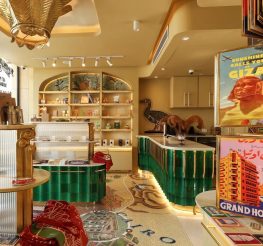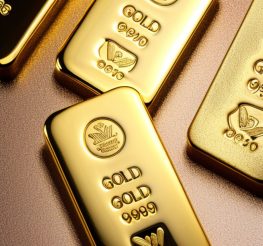
Cairo 360
These days, with all the attention focused on the Grand Egyptian Museum (GEM) and the renovations of the Egyptian Museum at Tahrir, the Egyptian Geology Museum is being neglected. If you’ve never heard of it before, don’t be alarmed, because neither had we! And it is for that exact reason that we are dedicating this article to the Egyptian Geology Museum. To be honest, people may not recognise the name because its online ratings and facilities are not as amazing as the first two. Nevertheless, when we came across some photos, taken from the inside, in a piece, by Sada El-Balad English. We were truly amazed that such a museum existed and thought we’d share our discovery with all of you.
Let’s start with the dates and historical facts. The Egyptian Geological Museum is located in El-Maadi and is considered the first of its kind in the Middle East and Africa. It was first established in 1901 in the Downtown area and was opened to the public on the 1st of December, 1904, as a part of the Egyptian Geological Survey (EGS), which was founded in 1896. The museum was later extended in 1968, when laboratories for petrology and palaeontology were added. The structure remained in Downtown until the original building was torn down to accommodate the construction of the Cairo Metro in 1982, when it relocated to Maadi. As for the first Museum Keeper, his name was “William Andrews”, a palaeontologist from London’s Natural History Museum. The original building’s architecture was in a Greco-Roman style, designed by the French architect, Marcel Dourgnon.
What will you find on display? The museum exhibits different samples of valuable rocks, ores, minerals, and fossils that are over 100 years old, including vertebrate relics that were unearthed in 1898 in the Fayoum Desert. You can also inspect a very valuable collection of meteorites, from all around the world, especially the famous Egyptian meteorite, “Nakhlite”, that fell at El- Nakhla El- Baharia village in 1911 and is believed to have originated from Mars. It is also stated that the museum is served by a library with references that date as far back as 1778, as well as up to date references and bibliographies that are available to the public and scientists.
The common negative comments that we found about the landmark was that its location is a bit tricky to find and that it needs a bit of sprucing up. Hopefully, this piece will help motivate more and more tourists and native visitors to check it out. In turn, maybe the authorities will support making the Egyptian Geological Museum more accessible to society.
According to the State Information Service’s official page, Egyptians were the pioneers in the extraction and utilisation of metals and stones, the essential basics of civilisation. Moreover, they were the first to discover gold and copper, and mine them from the Eastern Desert and Sinai. It is our duty to let the country, and the whole world know! Read more details about the museum via this link.
recommended
 City Life
City Life
Gizapolitan: A New Souvenir Experience at the Pyramids
Ancient Egypt Ancient Hitory +4 Sights & Travel
Sights & Travel
Journeys by Breadfast: From Bread Baskets to Travel Bookings
Breadfast Journeys +2 City Life
City Life


